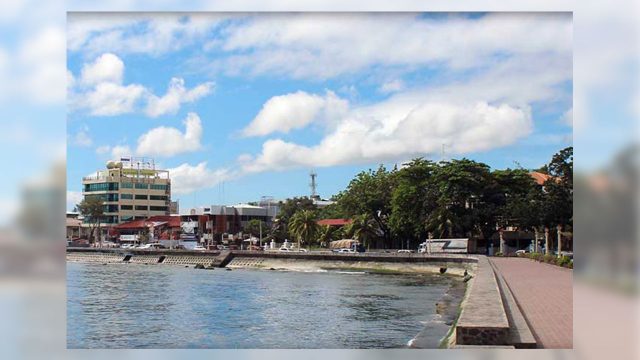
By Brontë H. Lacsamana
Amid suggestions of relocating and restoring corals to offset the environmental damage of the controversial 174-hectare “smart city” reclamation project in Dumaguete City, marine scientists have deemed any efforts impossible given the scale of destruction that the current known plans will wreak on existing ecosystems in the area.
“Integrating corals into the reclamation project will be impossible, like mixing oil and water,” said Dr. Wilfredo “Al” Y. Licuanan, director of the Br. Alfred Shields Ocean Research (SHORE) Center at De La Salle University, in a virtual forum in August. “Modern construction techniques are unfortunately very damaging to water quality and consequently anything in those waters.”
The seven islets of reclaimed land will run along the coastal Rizal Boulevard, about 30 meters off the present coastline, connected by a bridge. Its aim is to optimize the use of information technology to build a “green”, livable city that will include two wastewater treatment facilities, according to Dumaguete City Mayor Felipe Antonio B. Remollo, who entertained a virtual Q&A that same week.
A major concern has been transparency regarding the plans, raised by the National Academy of Science and Technology, Dumaguete-based Silliman University, and other institutions and organizations, which have emphasized that it’s important to consider the project’s impact on marine protected areas (MPA) in the region.
RELOCATION AND RESTORATION
In response to these concerns, Mr. Remollo promised preparations for a marine survey to be conducted so that, with modern technology, corals could be transferred and propagated in a different place. He also cited Jamaica’s same efforts that can be replicated in the Philippines.
“To be honest, I have no idea what the mayor is talking about. I have no idea what modern technologies he is referring to,” responded Dr. Laurie J. Raymundo, director of the University of Guam’s Marine Laboratory, in her part of the forum later that week. “My team and I would have bags of cement, hammers and chisels, our strength, and our time underwater. There isn’t any such technology that exists to my knowledge.”
Even in Jamaica, she shared that the same techniques are used, where divers go down, hammer and chisel away, put the corals into a boat, then cement them back later in the new location. In Dumaguete, the issue is the size of the corals, which are massive and will require a crane or barge plus engineering expertise, all of which will be costly.
Mr. Licuanan agreed with this as well, adding that the marine biodiversity in Jamaica is incomparable to the Philippines, with Philippine reefs boasting 100 to 200 species of coral compared to the 50 species in Caribbean reefs. This would entail plenty more elements to consider when touching any ecosystem.
Application for reclamation, which Mr. Remollo shared will take the Philippine Reclamation Authority (PRA) about three years to process, involves study of the four MPAs affected by the project. With these plans, he posted the question to critics: “Is it not possible that we can create a reasonable balance between economic growth and the preservation and the protection of the environment? It can’t be just black or white.”
IMPORTANCE OF MARINE BIODIVERSITY
Disturbing the ecosystem built around a coral reef will take intensive research and careful consideration given the biodiversity that will be lost no matter the efforts, according to both scientists in the forum. They also clarified that relocation involves saving just the select living layer of a reef, with its coral skeleton and the accumulation of its body left behind, especially for massive reefs like in Dumaguete.
“Reefs are important for the food security in the country. They are feeding grounds and nursery grounds even for deep sea fishes,” said Mr. Licuanan, stressing that reefs support 25% of marine life. He added that the destruction of life in Dumaguete could affect ecosystems in the rest of Negros due to the interconnectedness of marine life, with another important role being the protection of the coast from waves during typhoons, especially when also backed by mangroves and seagrass beds.
Citing cases of Philippine reefs that have been able to recover from bleaching from climate change, Ms. Raymundo also shared that Caribbean reefs have undergone enormous amounts of mortality, with one hypothesis being their lack of diversity. In that case, Philippine reefs benefit from richer marine life.
On the question of what amount of destruction would be acceptable, she added, “The people of Dumaguete will have to decide what they’re willing to live without. The fact that this [talk] series is taking place is already a statement that this project is too much.”
0 Comments